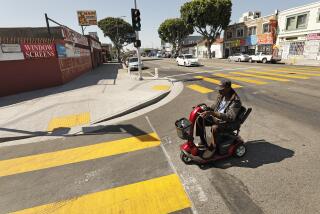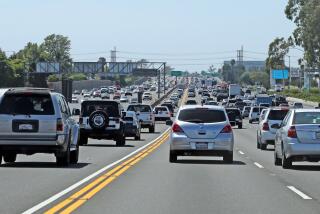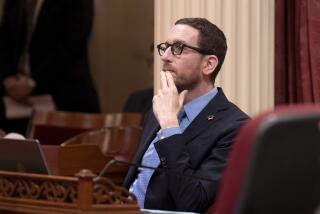Ineffective Bus-Lights Law Will Give Us False Sense of Traffic Safety
- Share via
* I am writing in response to your editorial (“Weak but Needed Safety Step,” Sept. 3) in which you supported the bill passed by the state Legislature regarding the use of flashing lights on school buses. Although I agree that the bill is weak, I must take issue with your assessment that it is a first step toward the ultimate goal of requiring the use of the flashing lights whenever the bus stops to load and unload passengers.
The existing law requires the use of the flashing lights only when children must cross the street to get to and from their assigned stop, and prohibits the use of the flashing lights in any other circumstance. The new legislation would only allow school districts to obtain permission to flash the lights at stops which “present a unique traffic hazard.” This immediately eliminates most stops. This means that if a school district wanted to designate such a stop, it would be required to prove that it met the “unique” status which the law has defined. It is doubtful that the school districts would be willing to jump through the necessary hoops to accomplish this for more than a handful of stops if any at all.
The argument for using the lights at all stops is simple. Children as young as 4 years old ride the bus. To assume that a child of this age will behave in a predictable manner is courting disaster. We must start with the assumption that children this young will do the unpredictable. Any vehicle passing a stopped bus from the rear would be unable to see a child entering the roadway from in front of the bus. The child’s view would likewise be obstructed. This creates a condition where chance accidents are guaranteed to occur.
The problem with the new legislation is in the randomness of these incidents. Since the danger presented by the lack of visibility is inherent in all stops, we cannot predict at which stop the next accident will happen. This means there would be only an insignificant reduction in the odds of an accident occurring. This is unacceptable.
This issue is a matter of life and death and we cannot afford to settle for ineffective legislation which says something but in reality does nothing. The passage of this bill will allow those opposed to using the lights to falsely claim that action has already been taken. I believe that in the long run this will make it more difficult to get truly effective legislation enacted.
For this reason, I have asked Gov. Wilson to take a stand on this issue and veto the bill in its present form and send it back to the Legislature. In my view it not only doesn’t do enough, it does nothing at all.
TOM LANNI
Laguna Niguel






